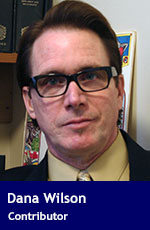 Have you ever met someone who appears comfortable in front of a crowd of people delivering a speech, making a presentation, cracking jokes or performance acting? Wouldn’t you like to be like them? Now imagine how you would react if you were told that part of your job would include giving presentations and talks?
Have you ever met someone who appears comfortable in front of a crowd of people delivering a speech, making a presentation, cracking jokes or performance acting? Wouldn’t you like to be like them? Now imagine how you would react if you were told that part of your job would include giving presentations and talks?
It is likely to happen, so get prepared now. Your career may depend on it!
If you’ve been promoted (or hope to be!) into a position where you will be asked to present material to a group, here are three questions you should be asking yourself:
- What are some of the best ways I can get up to speed with public speaking?
- What are some tips I need to know for effective public speaking?
- What challenges to public speaking might I face, and how can I deal with them?
Let’s take these on one at a time:
What are some of the best ways I can get up to speed with public speaking?
- Seek a mentor. Ask someone you know and whose speaking ability you admire to coach and/or critique you during a practice session.
- Join a group like Toastmasters International. Membership is less than $100 in most areas. Even “natural” speakers have quirks that can be pointed out and minimized or improved upon, and joining an organization like Toastmaster can help hone your skills.
What are some tips I need to know for effective public speaking?
- Practice, practice, practice! Know your material cold!
- When giving a speech (without back visual material), use an outline to keep on topic. Don’t go off on tangents. An outline or notes are a great help.
- When using PowerPoint or SlideShare, there’s an apt term: “Death by PowerPoint.” PowerPoint hints:
- Words:
- The fewer words used, the better. Bullet points should be single words or short phrases, not paragraphs.
- Reading long text is death!
- Use animation to focus the audience’s attention (see below).
- Images:
- Employ clipart or pictures that illustrate what your content is about, then add your dialogue. This method keeps the audience focused on you. It also gives you plenty of wiggle room … and can get a chuckle or two.
- Animation:
- Do NOT over animate! Don’t use crazy animation.
- Use the K.I.S.S. (Keep It Simple Stupid) system!
- Animate each bullet point so you control the presentation.
- Questions:
- Engage the audience by asking questions.
- Point to specific members of the audience as examples.
- If you don’t know the answer admit it, promise to get back to the person/people … then DO IT!
- Words:
What challenges to public speaking might I face, and how can I deal with them?
- Everyone has a fear of public speaking. No matter how famous, we all have been uncomfortable speaking at times. You are making yourself vulnerable. Being nervous is normal.
- You are likely to endure sweaty palms, nervous dripping underarms or head, dry mouth, cracking voice, the shakes. Most successful speakers (and actors/comedians) use self-deprecating humour to break the ice with the audience and simultaneously overcome their nervousness.
- As always, practice will make you more comfortable.
If you work on these principles, not only will you likely advance your career, you will be respected and admired by your audience … none of whom would feel comfortable speaking to a crowd like you just did.
Dana Wilson is a freelance writer.
The opinions expressed by our columnists and contributors are theirs alone and do not inherently or expressly reflect the views of our publication.
© Troy Media
Troy Media is an editorial content provider to media outlets and its own hosted community news outlets across Canada.

